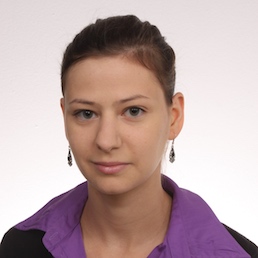[CII] as a SFR tracer in M31 and M51: A ~constant photoelectric heating efficiency links [CII] 158 um with young stars
David Caro building, Level 7 conference room
More information
-
 Dr Maria Kapala, SARChI Postdoctoral Fellow
Dr Maria Kapala, SARChI Postdoctoral Fellow
University of Cape Town
Email: kapala[at]ast.uct.ac.za
Abstract
The energy balance sets the structure of the interstellar medium (ISM) phases, which in turn control the processes of star-formation (SF). We investigate the balance between the heating by stellar radiation, and neutral gas cooling dominated by [CII] emission line. [CII] is typically the brightest far-IR emission line from star-forming galaxies, and it has been proven to be a useful SFR tracer, both locally and at high redshifts, however, with some vital caveats. Specifically, we are interested wheather there are any changes in the efficiency of the photoelectric heating (PEeff), the dominant heating mechanism of the neutral gas, that might affect reliability of the [CII] as a SFR tracer. To address these issues, we have assembled a unique set of observations in two nearby galaxies, M31 and M51. Multi wavelength FUV-FIR photometric coverage enables a well constrained SED modelling. Key observations of [CII] emission at high, 50pc, resolution in five SF regions in M31 (Herschel), and the first fully mapped galaxy at ~650pc resolution in M51 (SOFIA), enable a local and a global studies. Finally, we model individually resolved stars with 6 band HST photometry down to spectral type F0 with PHAT survey in M31 using BEAST (Bayesian Extinction and Stellar Tool) for an independent measurement of the heating at smallest scales. A commonly used ratio [CII]/TIR (total IR emission), fails as a proxy for PEeff, because the TIR measures all dust heating, not just the FUV photons capable of ejecting electrons from dust grains (Kapala et al. 2017). We find [CII]/TIR to be strongly correlated with UVatt/TOTatt (inferred from MAGPHYS SED fitting), indicating that, in M31 at least, one of the dominant drivers for [CII]/TIR variation is the relative hardness of the absorbed stellar radiation field. We define PEeff(UV), [CII]/UVatt which should be more closely related to the true PE efficiency, which we find to be essentially constant (1.85 ± 0.8%) in all explored 700x700pc fields in M31, regardless of the value of [CII]/TIR (varying by a factor of 3). I will present the above findings and the preliminary results of the [CII] - SFR relation, and the PEeff(UV) on 650pc scales in M51. I will also explore environmental dependencies on those relations.